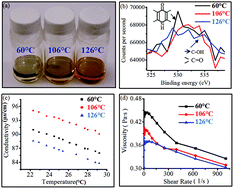Ultra-thin carbon nanofibers based on graphitization of near-field electrospun polyacrylonitrile
Abstract
A novel manufacturing means for arrays of carbon fibers with diameters less than 10 nm has been developed. The method improves dramatically upon the state of the art of making carbon fibers by pyrolysis of near field electrospun (NFES) polyacrylonitrile (PAN) fibers. The conductive nature of the PAN ink, touch and retract mode of the droplet at the ejector needle tip and a rotating drum for jet initiation as well as a tight control of the ink flow and droplet shape with a porous paper enable continuous near field electrospinning at an ultra-low voltage of 35 V – far below current low-voltage NFES practice. By pyrolyzing the thus obtained thinner PAN nanofibers on carbon scaffolds, a dramatic further shrinkage of the diameter leads to ultrathin carbon nanofibers e.g. from an ∼245 nm polymer fiber to an ∼5 nm carbon fiber i.e. a 4900% reduction in fiber diameter. To increase and survive the thinning during the pyrolysis process, PAN stabilization at a relatively low temperature (115 °C) and carbon support scaffolds are implemented to provide just the right amount of tension of the suspended polymer nanofibers. A small inter-fiber spacing (<8 μm) of the ultrathin carbon fibers in an array is achieved by simultaneously controlling the linear speed of the spinneret and the rotational speed of the collector. In one application, we demonstrate aligned ultra-thin carbon fibers freely suspended and in good ohmic contact with carbon scaffolds on a silicon substrate.



 Please wait while we load your content...
Please wait while we load your content...